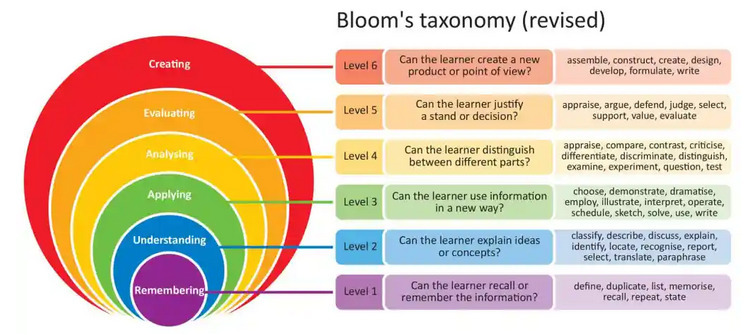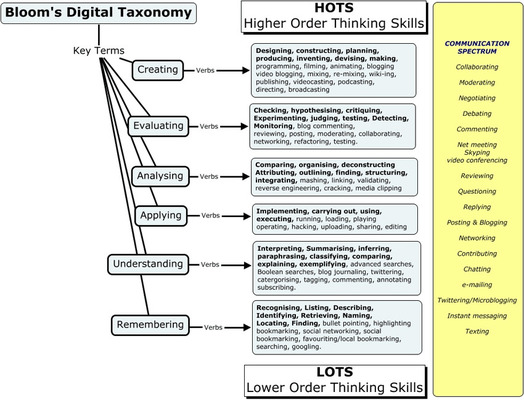We are Ready for Digital World
Is a project to connect teachers and students to the digital era and so, use tools and methods in an effective way. Due to the Covid-19 pandemic, it has been necessary to leave face-to-face teaching aside and start using applications and programmes to teach at a distance. Although students won’t take part in mobilities abroad, they will take part in conferences , workshops and teachers will receive training on web 2 tools, coding, programming, robotics and virtual reality with the aim of becoming competent acquiring digital and technological skills. The teaching-learning process will be carried out where face-to-face teaching is not possible, adapting technologies to the different fields of education.
In order to make teachers aware of how students learn and develop what they have learnt in an effective way, let's focus on Bloom's Taxonomy:
Bloom's taxonomy was created by Benjamin Bloom in 1956, he developed a taxonomy of learning objectives as a structure to understand the learning process. Divided into three psychological domains – cognitive (processing information), affective (attitudes and feelings) and psychomotor (physical skills) – his taxonomy progressed from Lower Order Thinking Skills (LOTS) to Higher Order Thinking Skills (HOTS). The levels he identified were: knowledge, comprehension, application, analysis, synthesis and evaluation. He followed the thinking process with the logic that you “can not understand a concept if you do not first remember it, similarly you can not apply knowledge and concepts if you do not understand them” (Churches, 2008). Forty years later Lorin Anderson and David Karathwohl, former students of Bloom’s, revisited Bloom’s Taxonomy, publishing a revised version in 2001 which reordered the sequence of categories and used verbs rather than nouns to describe each category. It is this revised version that Andrew Churches used to develop his digital taxonomy, keeping Anderson and Karathwohl’s categories of remembering, understanding, applying, analysing, evaluating and creating, but extending them into the digital environment.

The 6 Levels of Bloom’s Taxonomy
1. The first level is to Remember.
Example activities at Remembering level: ,emoroze a poem. recall state capitals, remember maths formula.
2. The second level is to Understand.
Example activities at the Understanding level: organize the animal kingdom based on a given framework, illustrate the difference between a rectangle and square, summarize the plot of a simple story.
3. The third level is to Apply.
Example activities at the Application level: use a formula to solve a problem, select a design to meet a purpose, reconstruct the passage of a new law through a given government/system.
4. The fourth level is to Analyze.
Example activities at the Analysis level: identify the ‘parts of’ democracy, explain how the steps of the scientific process work together, identify why a machine isn’t working.
5. The fifth level is to Evaluate.
Example activities at the Evaluation level: make a judgment regarding an ethical dilemma, interpret the significance of a given law of physics, illustrate the relative value of a technological innovation in a specific setting—a tool that helps recover topsoil farming, for example.
6. The sixth and highest level is to Create.
Example activities at the Creation level: design a new solution to an ‘old’ problem that honors/acknowledges the previous failures, delete the least useful arguments in a persuasive essay, write a poem based on a given theme and tone.
from https://www.teachthought.com/learning/what-is-blooms-taxonomy/
Bloom's Taxonomy for the Digital Era
Bloom’s Digital Taxonomy (2008) was developed by Andrew Churches as an extension of the original Bloom’s Taxonomy and creates a hierarchy of learning activities in a digital environment.

The verbs in bold type are the existent ones. The verbs which are not in bold, are the new ones in the digital environment.
from https://www.niallmcnulty.com/2017/11/blooms-digital-taxonomy/
We will take into account this hyerarchical process when using digital tools in the teaching-learning process.